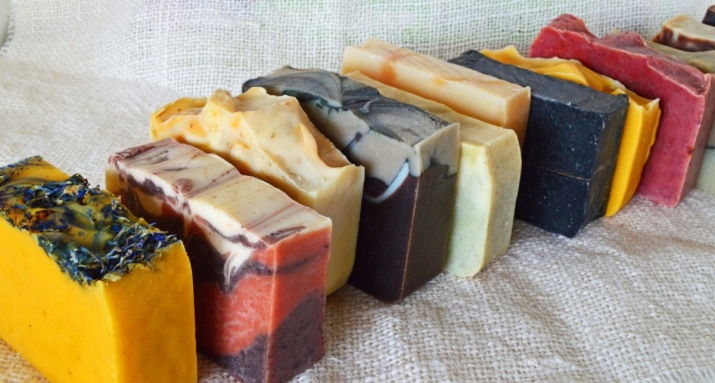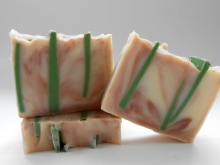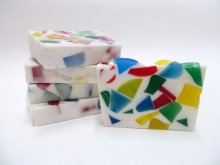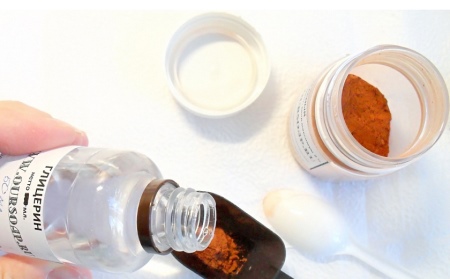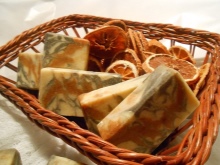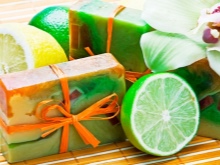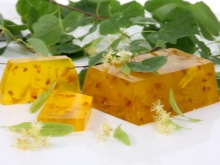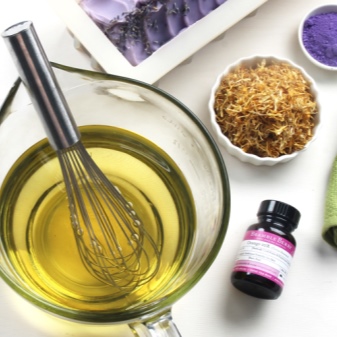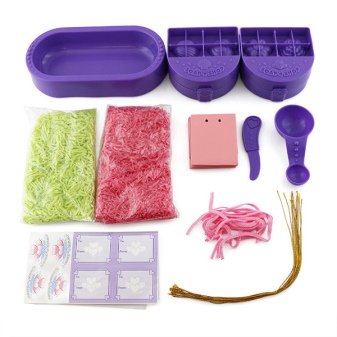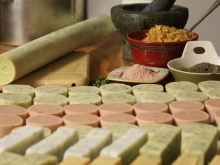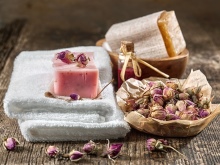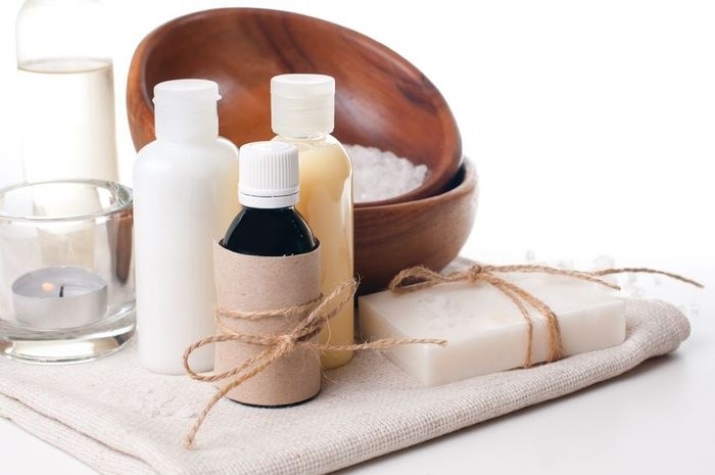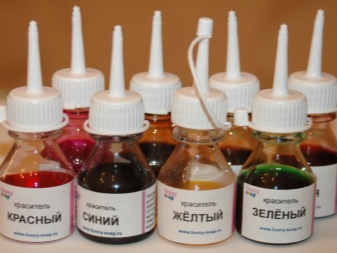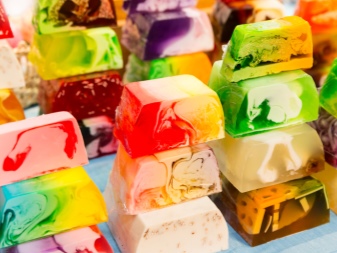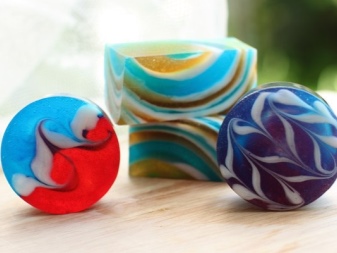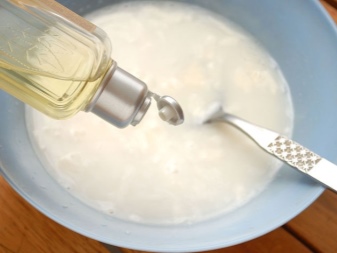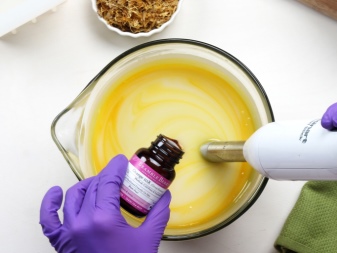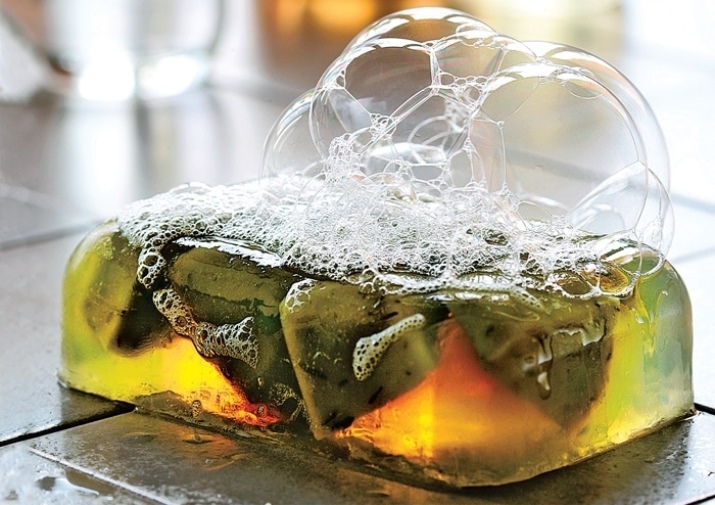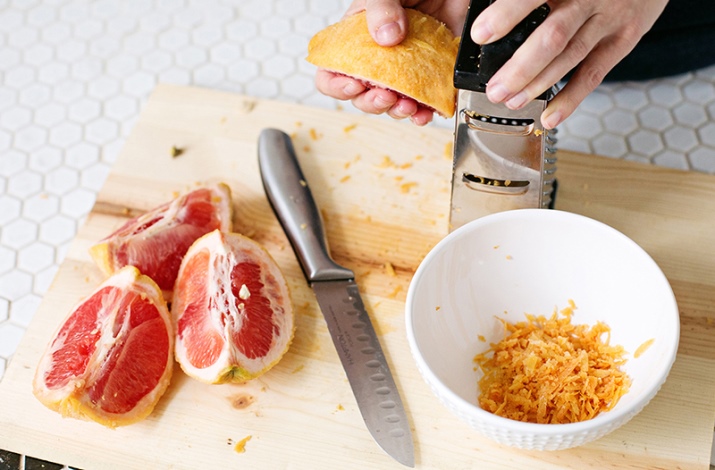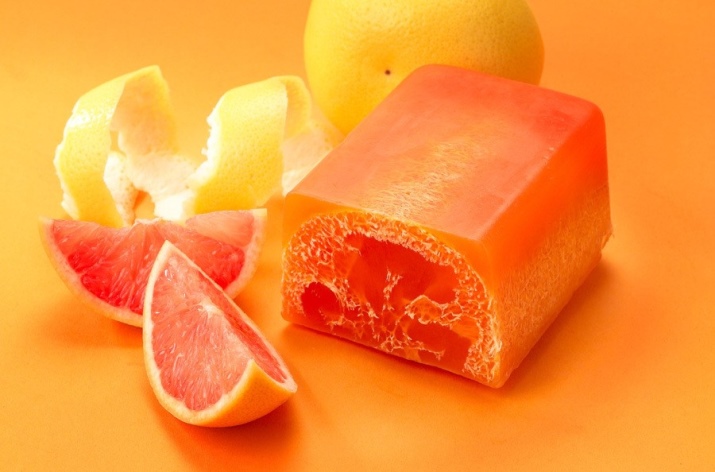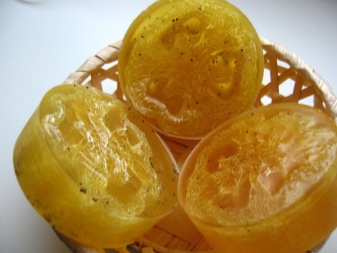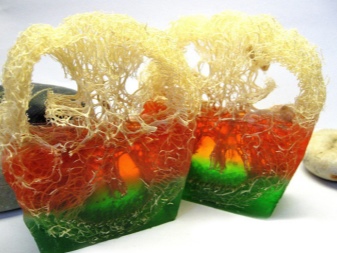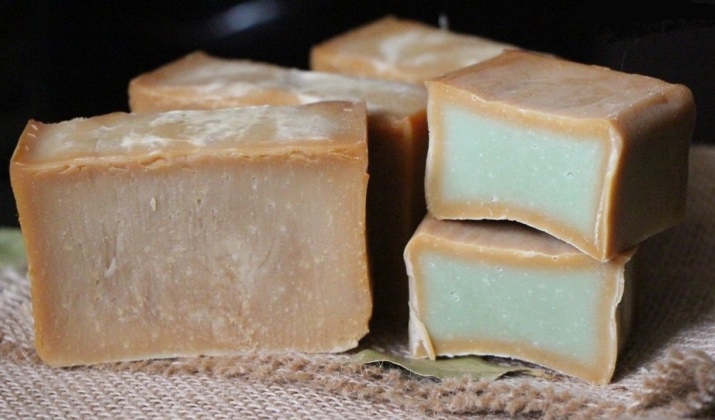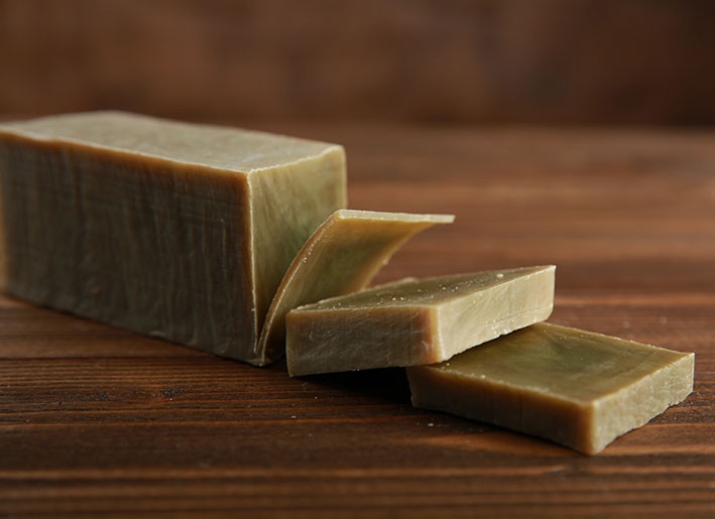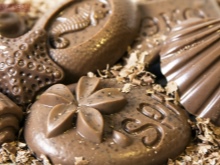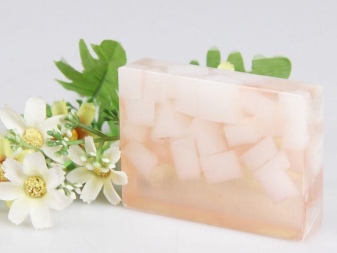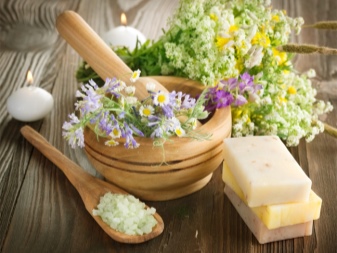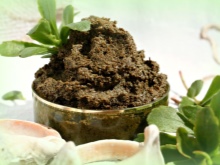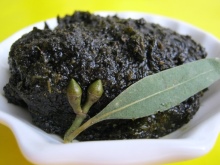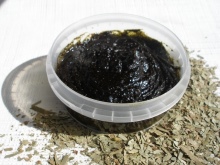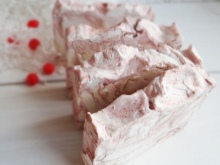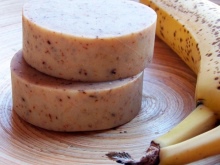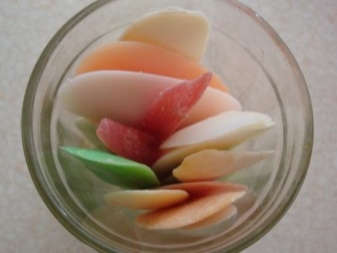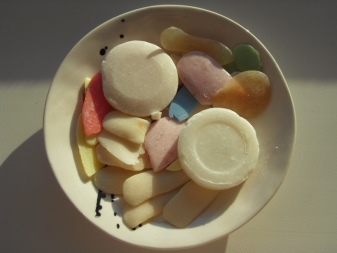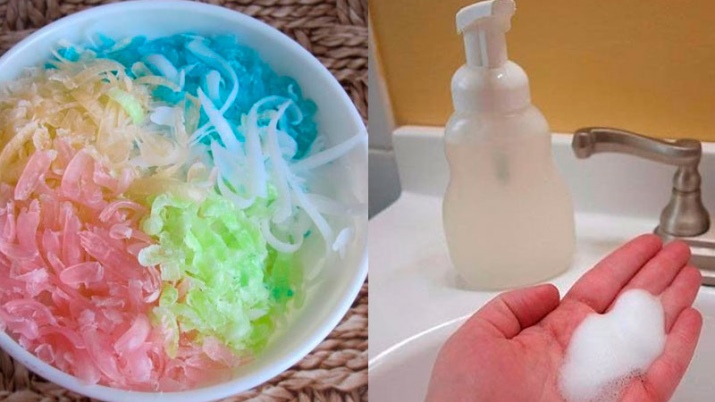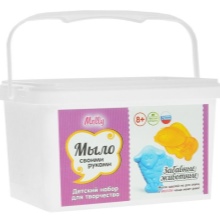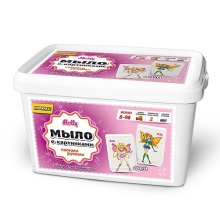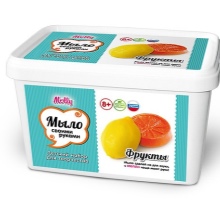Soap with your own hands
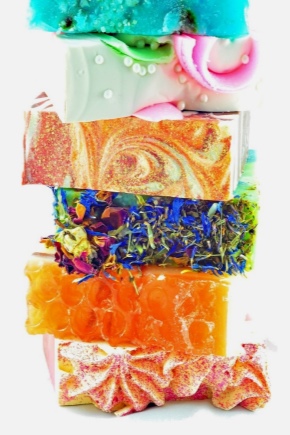
In everyday life, people are constantly faced with the use of various chemicals. Every day, to keep clean, millions of people use them to wash dishes, the floor, to wash things and, of course, for personal hygiene. Moreover, a person comes into contact with toxic substances in the course of his normal life activity. This can not affect our health and general condition: the dangerous components of the usual means - hair dyes, cosmetics, shampoos and hair balms, etc. - are released into the body through the skin, negatively affecting the body as a whole and causing various diseases.
One way to avoid such an impact can be the manufacture of various tools yourself. You can start with a simple one - cooking homemade soap. Soap is one of the simplest and most accessible things, with which it is easy to maintain cleanliness and maintain personal hygiene. Having mastered soap making, you can avoid unpleasant allergic reactions to purchased products, as well as get pleasure from the process itself.
Kinds
There are a lot of types of hand-made soap: each sample can be absolutely anything and correspond to the tastes of different people, as well as respond to different tasks. To soothe problem skin, you can make honey, milk or chamomile soap. In this case, it will soften the influence of the environment and relieve irritation. This tool is perfect for dry and normal skin.
For various purposes, you can make cream soap, soap scrub, shampoo or anti-cellulite soap. Self-made tool can be used not only for adults but also for children, especially the children's version is relevant for those parents who have children with allergies.
Particularly, glycerin soap can be distinguished, however it is necessary to be careful with it and use in moderate quantities, because despite its positive properties - a high degree of skin hydration and the ability to make it more toned and elastic, it has a number of contraindications and possible side effects. It is especially dangerous to use it on inflamed and sensitive skin, and if it is used excessively, it will dry out it, depriving the outer layer of moisture. When making it at home, it should be controlled so that the percentage of glycerol does not exceed 5%. and in any case not to mix it with substances containing silicone. However, you should not be afraid of it - with moderate use it will only be useful.
Benefits
Soap, which is sold in stores is usually far from ideal, so homemade soap can guarantee you reliability and confidence in the absence of side effects. Among other irrefutable advantages - such a soap, in contrast to the samples sold, will be fragrant and useful. The process of its manufacture will interest people of any age: for it you can use not only all sorts of aromatic additives and color dyes, but also various forms and interesting decorations, the result will be not an ordinary toilet soap, but an original work of art.
Manufacturing process
Mylovary with experience make soap from scratch from alkali and fats. Beginners also offer a ready-made soap base, which can also be replaced with baby soap. On the modern market offered many options for creativity, including special kits for beginners.
Basic set for soap making
The standard soap making kit is quite simple. You need to prepare a container in which all the ingredients will be mixed, prepare the necessary raw materials: base or baby soap, oils and desired additives (it is better, of course, to use all natural) and the form into which the prepared solution will be poured. Before using the form should be oiled so that the finished product can be easily removed from the container. It is good to have alcohol at hand: it will help to get rid of the bubbles on the surface, if they appear while mixing the composition.
What is recommended to be included in
In order for the result you were pleased, it is recommended to use various additives in the preparation of homemade soap. Popular options with dry herbs (celandine, string, chamomile), with sea salt. These options can be used as a scrub: grains of salt and herbs clean the skin from dirt, so the effect of salt soap will be doubly useful. In addition, you can make the product on goat milk or make it with clay or honey. Such tools will be very useful if your skin is prone to redness and rash, as they will remove irritation.
Another way to make your soap unique is to add dyes to it. Soap making is a very creative process, and with dyes you will get a beautiful and interesting result. Decorative soap will not only please your eyes when used, but can also be an excellent gift for any occasion.
Natural dyes:
- Green - herbs.
- White - clay (white) or dry milk.
- Orange - sea buckthorn oil or carrot juice.
- Pink and burgundy - clay (pink), grated beets or its juice.
- Yellow - turmeric will give a rich color, calendula petals.
- Brown - coffee (ground), cocoa powder.
To decorate a gift soap, you can make it with a picture: just insert the printed image into the still not frozen sample. Also on the soap can be prints with lemons, oranges, watermelon and other fruits or flowers - depending on the smell of the soap itself. Another variant of the decoration is fancy ornaments inside the product - swirls, and coloring. And if you make some inscription on top, for example, with the name of the gift recipient, it will become even more pleasant.
Step by step instructions with photos
For making classic soap you need:
- soap base,
- the form,
- essential oil,
- dye.
Production steps:
- Add essential oils to the soap base.
- Add a dye to the mixture and mix gently to prevent air bubbles from forming inside the mixture.
- Pour the mixture into pre-lubricated molds. If you want the surface to be perfectly smooth, sprinkle some alcohol on top.
- Remove the soap from the mold. Done! This tool is suitable not only to wash your hands, but also for washing wool and textiles.
We offer you a simple and fast master-class on making glycerin soap. He will help you with his own hands to prepare an excellent tool that can be used for frequent use, including shaving. You will need:
- a piece of baby soap or soap base;
- 2-3 art. spoons of essential oil (you can use natural olive oil, grape seed oil, almond, rosehip, sea buckthorn, cedar, palm and others);
- 1 tbsp. a spoon of glycerin;
- 50 ml of boiling water.
First you need to prepare raw materials: alkaline mixture (mix glycerin and base; if baby soap is used, pre-melt it) and oils, and then heat them to 40 degrees separately. Gradually add alkaline to the mixture of oils, immerse the blender in a bowl and mix the contents for three minutes using approaches for a few seconds.
Pour a teaspoon of cinnamon oil into the finished solution to add flavor, at this stage you can implement any of your ideas: use dyes or other additives to get the desired result. After stirring again, pour the mixture into the form, pre-lubricated with olive oil, wrap with a towel or blanket and set to freeze for a day.
The best options for making homemade soap is difficult to choose, each of them is worthy of attention. We offer you the most interesting ways, everyone will find something for everyone.
For those who live outside the city in their home the easiest way can be cooking soap from ash - lye.
It is very good and quickly cleans the dirt, leaving a feeling of purity and freshness. To cook it, you need to collect a third of a bucket of wood ash (just wood, best ash of deciduous trees) and pour it to the top, removing the pop up pieces. Ash should be allowed to brew for about three days or cook the mixture until it becomes soapy to the touch - this will take an hour or a little longer. It is important to dilute the lye with water to 1 to 10 or more, otherwise you will not avoid strong irritation. Then it is not necessary to add natural flavors and useful additives to the product and send it to freeze in the forms for a day.
To combat cellulite and for weight loss is used soap with orange shavings. Orange peel has the properties of scrub, gently cleanses and massages the skin.
To prepare this soap, we need the following ingredients:
- soap base (preferably transparent);
- grape seed oil;
- orange peel;
- orange essential oil.
Crush orange zest with a blender or in a coffee grinder. Prepare 150 g of soap base, melt it and add grape seed oil. Pour one teaspoon with a hill of orange peel into the base and mix well. Zest will not only add a natural smell, but also paint the future soap in a light orange color, so that you can do without other dyes. When the base has cooled slightly, add a few drops of orange essential oil.
Prepare the forms and fill them with the resulting mixture. If bubbles appear on the surface, sprinkle with alcohol on top. Wait until the base has completely cooled down and reach for the ready-made handmade soap from the molds. Pack it in the next day.
Another soap is a product with loofah (natural washcloth). There is almost no allergy to it, so it suits all skin types and perfectly cleanses it from dead skin cells. In addition, for the preparation of washing scrubs, you can use oatmeal (oat-flakes), which must be crushed in a coffee grinder before being added to the base. After using such products, the skin becomes very smooth and silky.
Aleppo soap - This is one of the varieties of Castilian soap. It is considered one of the most delicate and suitable for delicate skin, and its recipe is simple: 100% olive oil and a precisely calculated amount of alkali. Allep soap differs from Castilian in that it contains laurel oil.
Laurel oil is taken in various percentages. To increase the antiseptic and antibacterial effect of the use of Aleppo soap, add a larger percentage. Soaps are traditionally recommended for cleansing and caring for oily, problem skin.
Another option, similar to Castilian - Marseilles soap. Unlike Castilian, it contains not 100% olive oil, but not less than 72%. It is very soft and pleasant, and most importantly - does not tighten the skin after application. The process of its preparation is similar to Aleppo.
Lovers of sweets will surely like chocolate soap. This is a natural antioxidant, which means a fighter for a beautiful appearance. It improves mood, stimulating the production of serotonin (“the hormone of happiness”), and also invigorates and increases blood circulation.
Ingredients Required:
- 500 g of soap base;
- 50 g of dark chocolate;
- 1 tbsp.cocoa spoons;
- 0.5 tbsp. spoons of coconut oil;
- 50 ml wheat germ oil;
- 10 drops of essential oil (lavender, mint, bergamot, cinnamon, cypress, coriander, cardamom or fennel).
The soap base must first be crushed and melted. As soon as it has melted, you should add grated dark chocolate to it, mix the mixture until smooth. After that, pour cocoa, add coconut oil, mix and pour wheat germ oil. As soon as the mixture becomes homogeneous again, it must be removed from the heat or water bath, add the essential oil, cool a little and pour into molds.
If you add to the chocolate soap in the process is not cocoa, and ground coffee, you get a great coffee option. The smell of such soap is unusually attractive and even causes an appetite: having closed your eyes, you can imagine that you drink freshly brewed coffee and eat a delicious cake or cake.
Flower and soap motives are very popular. Such soap is usually somewhat jelly, transparent, every flower and blade of grass can be seen in it. Chamomile and lavender soaps keep this championship, being the most popular among the masters of homemade soap making. A certain role in their success is also played by fragrance: when using such a product, it seems that somewhere near there is a bunch of fresh cut flowers.
An affordable way to get rid of acne and black spots is to cook soap with activated carbon. To do this, follow the standard recipe, but before you add oils and other additives, you need to pour crushed coal tablets into the solution. If you use this soap regularly, within a week the problem areas on your face and body will become noticeably less, and after a while you will forget that you once had acne on your skin. In such a soap is also a good idea to add lavender oil to fix the action of coal.
Frequent visitors to the hammam know that it is customary to use the national Moroccan Black Soap Beldy. It simultaneously acts as a scrub, skin cream, and also perfectly cleanses. To make an analogue of beldy at home, You need:
- 100 g of grated baby soap;
- 150 ml of green tea (brewing);
- 0.5 tsp dry ginger;
- 50 g ground eucalyptus;
- 20 ml of olive oil;
- 40 drops of eucalyptus oil.
Stages of cooking:
- Pour chopped soap with tea and melt in a water bath. After the mixture becomes homogeneous, remove it from the heat.
- Add ginger and crushed eucalyptus.
- As the mixture cools, add eucalyptus oil to it and mix thoroughly.
- Pour the mixture into a jar, close tightly and put in a dark place for 10-12 days.
As soon as the beldy is ready for use, it will acquire its famous dark color. This soap has a very unusual consistency: something between liquid and solid soap. We can say that it is a soufflé, but not so light. Before applying the beldy you need to steam the body, then take a little soap and, slightly foaming, apply to the skin. Wait a few minutes and use a wet washcloth to massage all over the body. You can leave the product for a few more minutes, then rinse and enjoy the effect.
Typical mistakes
The main rule - do not neglect the cooking technology and violate it, then the result will not please you.
In no case Do not abuse oils and additives. Excessive amount will not result in the desired cosmetic effect, will not be washed and the smells of its components will interrupt each other and merge into a single strange aroma. In addition, an improperly prepared product can cause allergies. In the case when the soap is boiled specifically for the child, the oil should be completely excluded from the composition.
Another mistake - an excessive amount of herbs and other solid components in the composition. With their abundance, they will scratch the skin, causing redness and even small wounds.
You need to be careful with natural dyes, they often give the wrong result, which is planned. Many people use red rose petals or hibiscus tea for coloring to get a red hue, but in fact the first ones give off a dirty gray color, the second one gives a dirty green color.
A detailed master class of cooking soap from the remnants can be viewed in the next video.
It is very important to properly store household products: they do not like heat and it is better to keep them in a cool room or closet. Soap on herbal broths should not be done immediately and a lot, if you are not going to use it quickly. It has a limited shelf life - no more than two months.
If you decide to melt the remnants of the base, make sure that they were made from the ingredients you need.
How to use leftovers
Often we do not use soap to the end and the so-called remnants remain. Do not rush to throw them away: one can easily make a new soap, both solid and liquid.
To cook it, you need:
- Water (hot);
- Milk;
- Container for the finished product;
- Grater;
- Silicone molds.
For the liquid version, take water, remnants and milk in the ratio of 2: 2: 1. Rub the shreds on a fine grater and put the chips in the container. After that, fill in hot water, shake the container well to dissolve the chips in the water. Leave the mixture for two to three hours; periodically stir the contents of the container until the mixture is completely homogeneous. Over time, the chips will completely dissolve and it will be possible to pour milk, essential oils and use them as liquid soap.
To get a solid product, fill the soap chips with boiling water and leave it to dissolve in it, stirring about every 15 minutes. After a couple of hours, pour the mixture into forms and place in a cold place to harden it. In a couple of days, your soap will be ready.
A soap making set can be a great gift for you, your friends and children. Russian company Molly offers a large selection of different sets, including "Blackberry and Strawberry", "Helicopter and Airplane", "Racer", "Fruits", "Ocean", "Sweets", "Ray", "Crocodile and Hippo" and others.
Customer Reviews
Set Buyers Molly They note that the cooking process is very easy, simple and fast, and they began to use the resulting soap immediately. The sets include everything you need, including a clear step-by-step instruction that does not cause difficulties even for a child. In addition, many users liked the smell of the finished product: in sets Molly mainly berry flavors are used.
Do not be afraid to discover something new. Soap-making can be not only a pleasant and rewarding hobby for you, but even a successful business. If you are afraid to start doing it yourself from improvised means, buy special kits for creativity and do not hesitate to join this magical activity.
